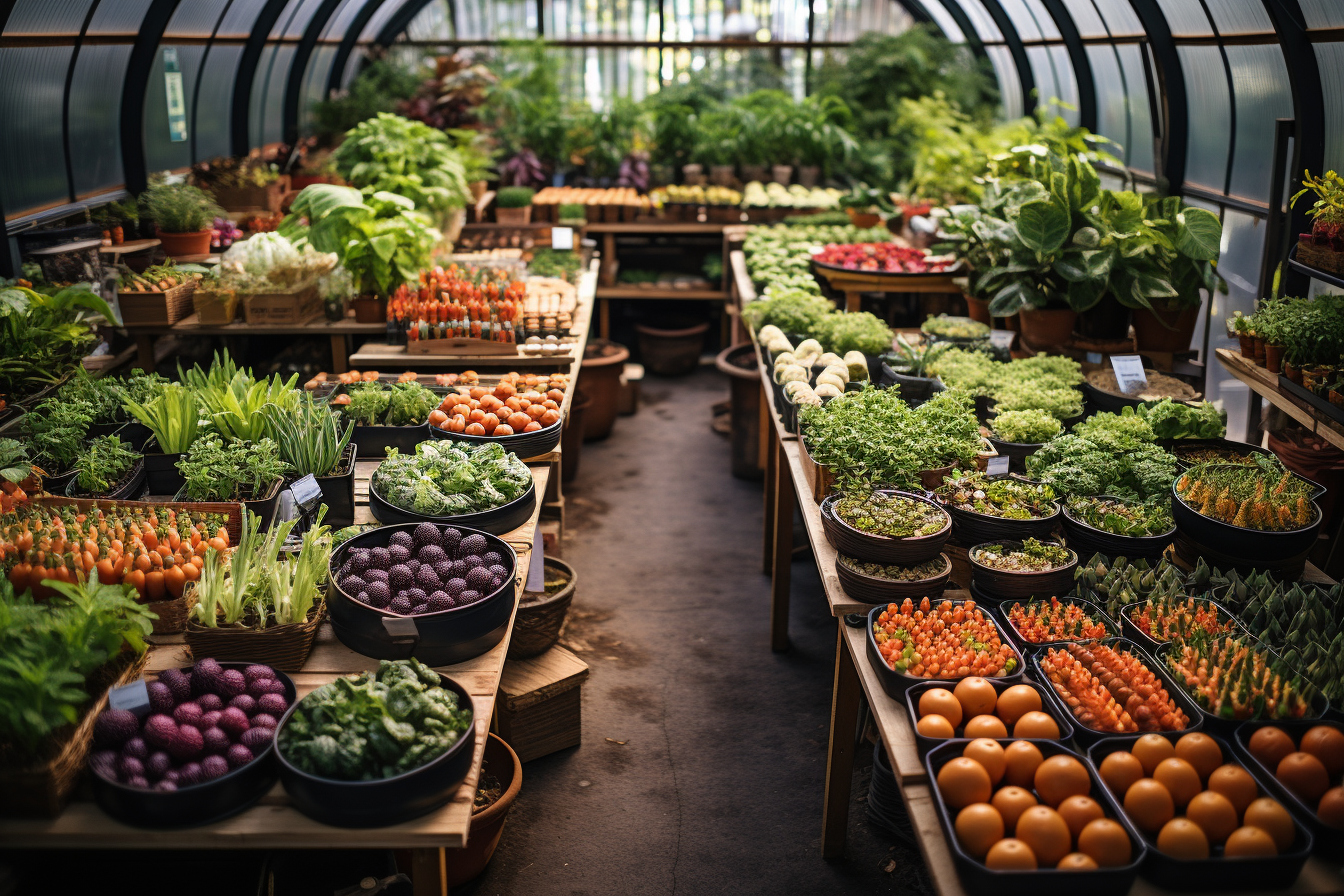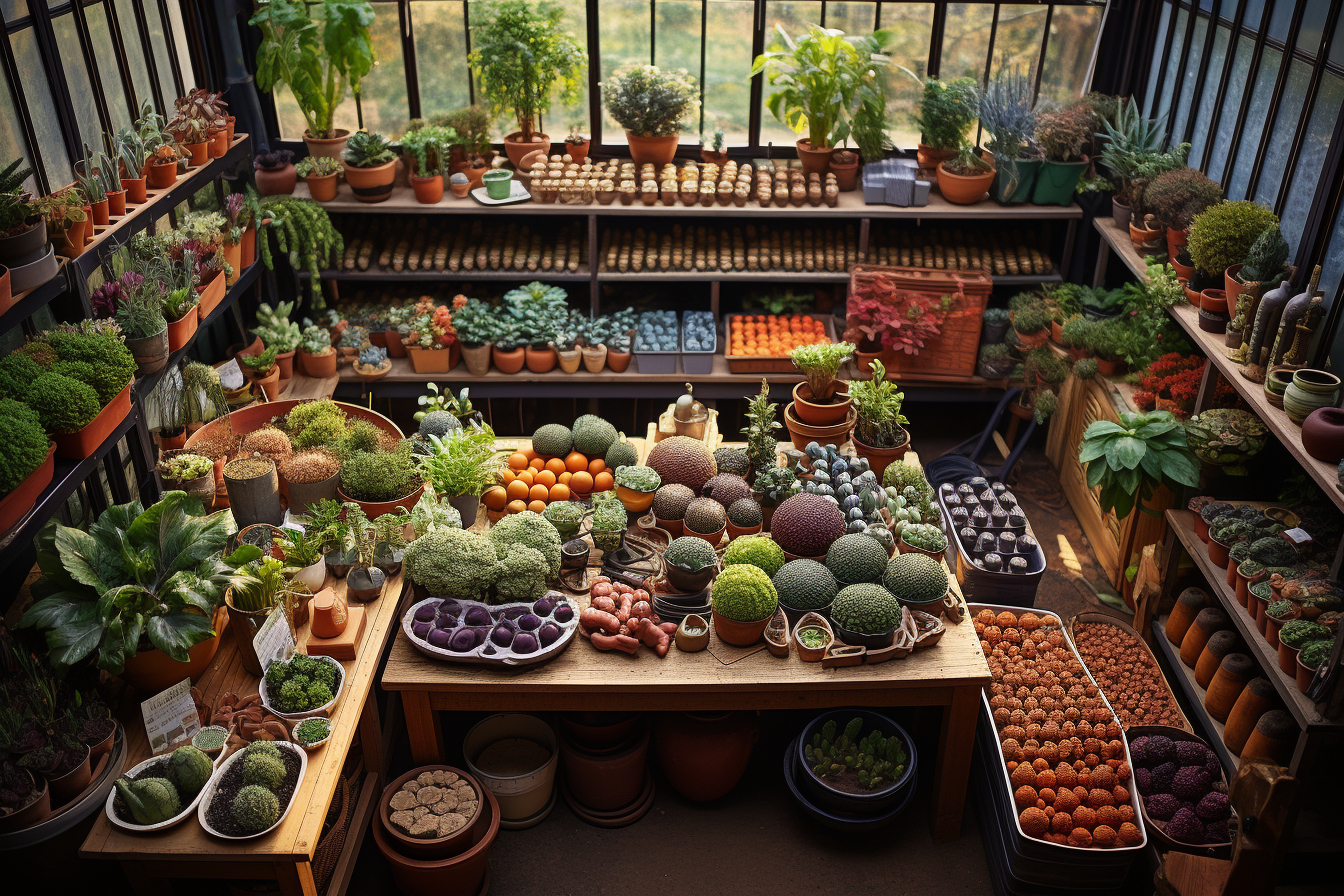Gardening is an art that allows us to reconnect with nature, grow our own vegetables and enjoy fresh and tasty products. However, changing climate and seasons often limit our ability to garden year-round. This is where building an underground greenhouse comes in, an ingenious solution to extend the growing season and ensure bountiful harvests, regardless of the weather conditions outside.

What is an underground greenhouse?
Building an underground greenhouse involves digging a cavity partially or entirely below ground level to grow plants. This allows you to benefit from a more constant temperature and protect crops from climatic variations. The walls and roof of the greenhouse are typically constructed with insulating materials, such as polycarbonate or glass, to maintain optimal temperature and maximize natural light.
The advantages of an underground greenhouse
- Extension of the growing season: By building an underground greenhouse, you can start your seedlings earlier in the spring and extend the harvest until late in the fall, or even into winter in some areas. This means that you can enjoy fresh fruits and vegetables all year round, without depending on the seasons.
- Weather Protection: Underground greenhouses provide protection against extreme weather events such as hailstorms, high winds or heavy rain. Your crops will thus be preserved from damage caused by these natural phenomena, ensuring a more abundant and better quality harvest.
- Space optimization: By building an underground greenhouse, you will be able to use the available space more efficiently. By growing underground, you can stack crops on multiple levels, maximizing the productivity of your garden. This is especially beneficial if you have limited space in your garden.
- Energy Conservation: Underground greenhouses are naturally insulated by the surrounding soil, reducing heating and cooling requirements. In addition, the use of transparent roofing materials maximizes the supply of natural light, thus reducing dependence on artificial lighting sources and energy costs.
Building an underground greenhouse step by step
- Choosing location: Select an area of your garden that receives sufficient sunlight throughout the day. Avoid shaded areas and make sure the soil is sufficiently draining to avoid humidity problems.
- Soil preparation: Dig a pit approximately one meter deep to accommodate your underground greenhouse. Be sure to prepare the soil well by adding compost or potting soil to encourage plant growth.
- Construction of the structure: Use insulating materials such as polycarbonate or glass to construct the walls and roof of your underground greenhouse. Be sure to seal the joints well to prevent water infiltration.
- Interior layout: Install shelves or growing containers on different levels to optimize space. Be sure to provide an efficient irrigation system to maintain the humidity needed by the plants.
- Choice of crops: Opt for plants suitable for growing in a greenhouse, such as tomatoes, salads, aromatic herbs or citrus fruits. Be sure to respect the specific needs of each crop in terms of humidity, temperature and light.
The ecological impact of underground greenhouses
While the underground greenhouse offers many benefits, including extending the growing season and protecting crops from harsh weather, it also has major ecological benefits worth exploring.
Preservation of natural resources
One of the main ecological characteristics of the underground greenhouse is its ability to preserve natural resources. As mentioned previously, underground greenhouses require less energy for heating and cooling due to their natural insulation. This means a reduction in energy consumption and, therefore, a reduction in greenhouse gas emissions. Additionally, the reduced need for artificial lighting saves electricity, further reducing the carbon footprint.
Reduction of water pollution
By growing in an underground greenhouse, it is possible to better control water use. With an efficient irrigation system, there is less water wastage. Additionally, runoff is reduced, meaning fewer fertilizers and chemicals reach waterways, helping to preserve water quality and reduce pollution.
Conservation of biodiversity
By digging to build an underground greenhouse, some people may fear a negative impact on soil biodiversity. However, if managed well, such a greenhouse can actually contribute to the conservation of biodiversity. Underground greenhouses can serve as a sanctuary for certain plant species, providing an environment protected from predators and disease. Additionally, these greenhouses can be used to cultivate endangered or rare plant species, thereby contributing to the conservation of genetic diversity.
Contribution to the circular economy
An underground greenhouse, by design, encourages a circular approach to agriculture. Organic waste can be composted and returned to the greenhouse soil, creating a life cycle for the nutrients. This method reduces dependence on chemical fertilizers and promotes more sustainable agriculture.
The Challenges of Maintaining an Underground Greenhouse
While building an underground greenhouse has many benefits, both in terms of crop production and ecological sustainability, it is not without its challenges. Understanding these challenges can help gardeners make informed decisions and ensure optimal use of their underground greenhouse.
Moisture management
One of the main challenges of growing in an underground greenhouse is humidity management. Since the greenhouse is partially or fully buried, it is naturally exposed to a higher level of humidity. Without proper ventilation, this can lead to the formation of mold and fungus, harming plant health and reducing crop quality.
Temperature control
Although the temperature inside an underground greenhouse is generally more stable than in a traditional greenhouse, there may be times, especially during the warmer months, when the temperature may become too high for some plants. Constant monitoring and an effective ventilation system are essential to prevent plants from suffering heat stress.
Access to light
Even if transparent materials are used for construction, the amount of natural light reaching the plants may be reduced, especially if the greenhouse is deeply buried. In some cases, additional artificial lighting may be necessary to ensure optimal plant growth.
Pest and disease prevention
The isolated nature of an underground greenhouse can, in some cases, make it more susceptible to pest infestations. Insect pests can breed in the confined environment, and without natural predators, their population can increase quickly. Likewise, diseases can spread quickly if not treated in time.












